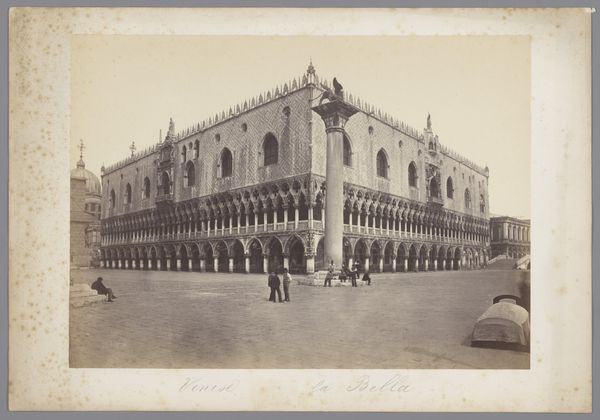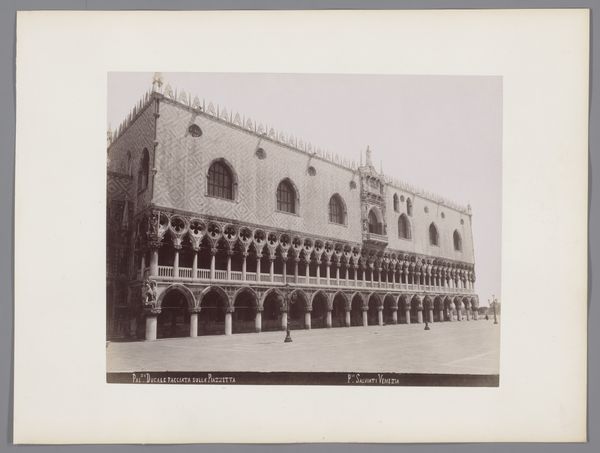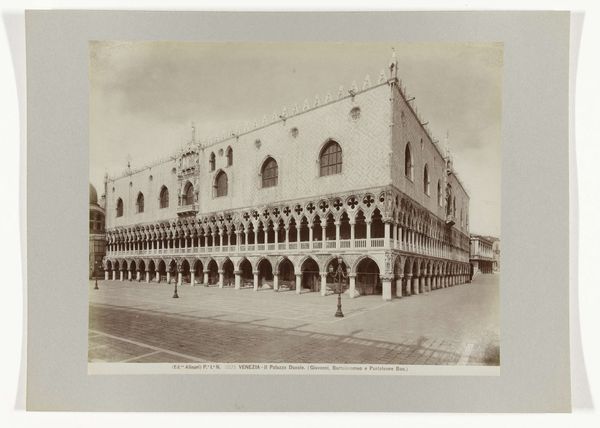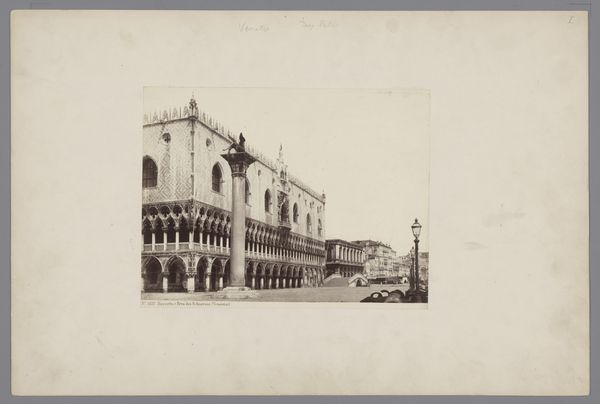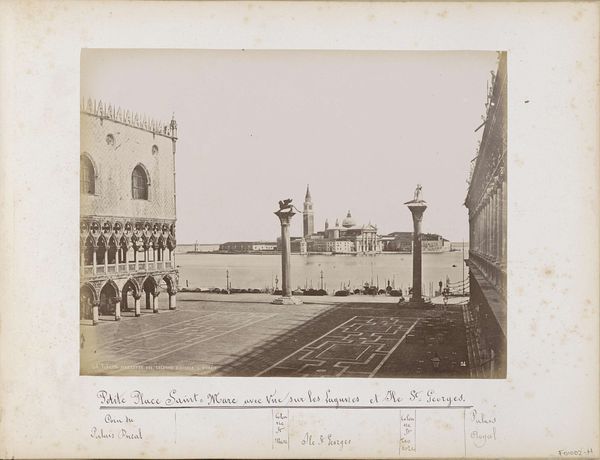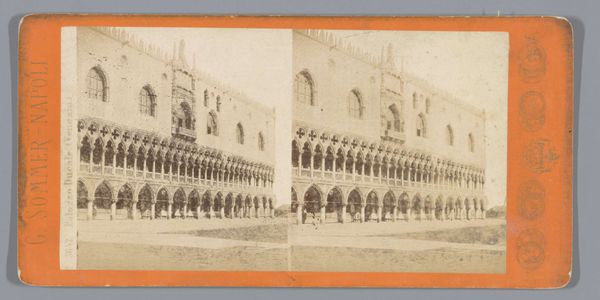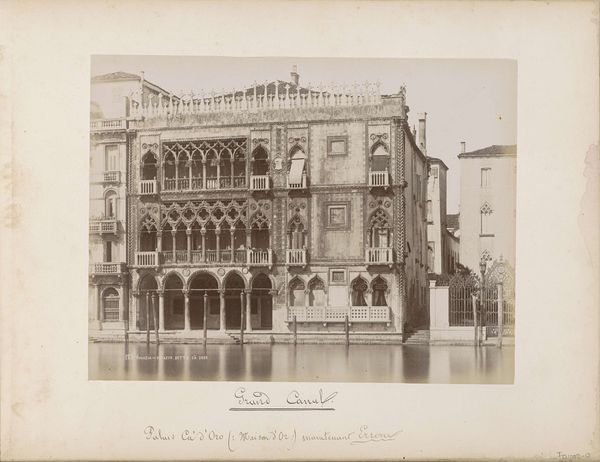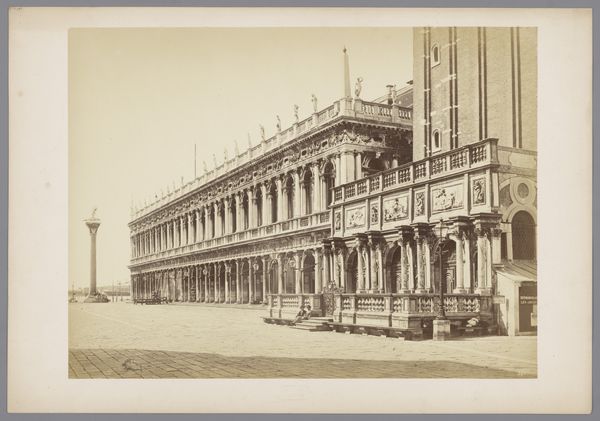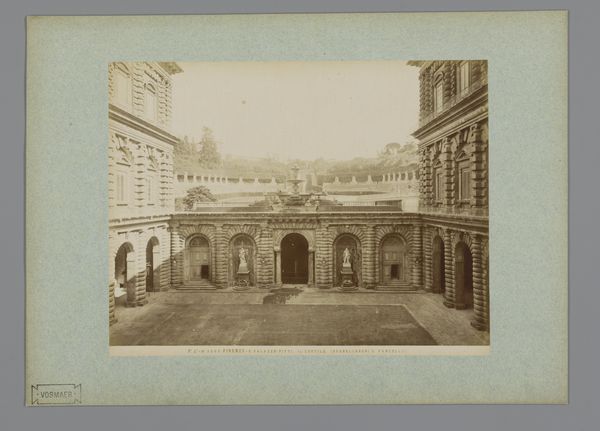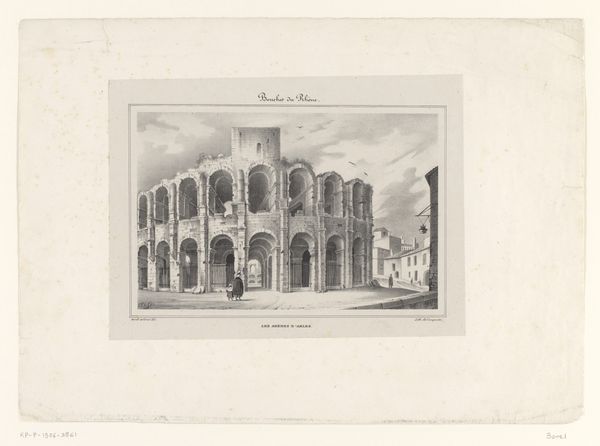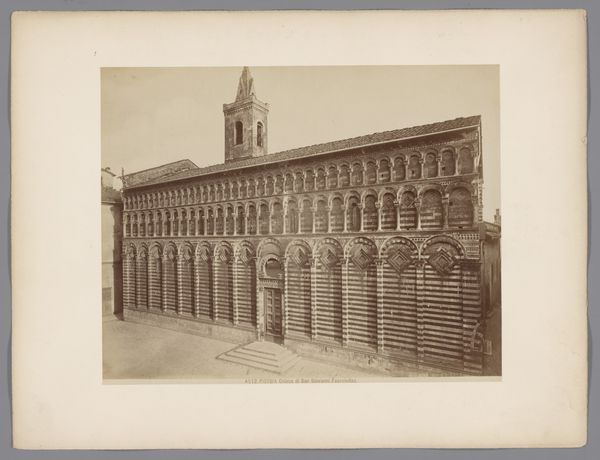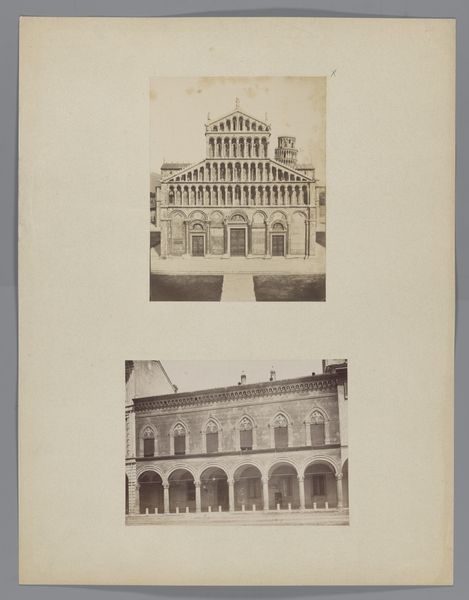
Dimensions: height 200 mm, width 260 mm
Copyright: Rijks Museum: Open Domain
This photograph of the Doge's Palace in Venice was made by Carlo Ponti in the mid-19th century, a time when photography was transforming the way Europeans saw their cities. Ponti's image, taken in Italy, presents the palace, a symbol of Venetian power, in the context of a rapidly changing social landscape. The Doge’s Palace served as the center of Venetian authority for centuries; this image of it prompts us to consider the politics of imagery and the social conditions that shape artistic production. In the 19th century, Venice was dealing with complex questions of national identity and political power. Ponti's photograph can be seen as engaging with these questions by presenting a particular view of Venetian history, one that emphasizes the grandeur of the past. To understand it better, we might research the social and institutional context in which Ponti was working. What was the role of photography in shaping perceptions of Italian history and culture?
Comments
No comments
Be the first to comment and join the conversation on the ultimate creative platform.
